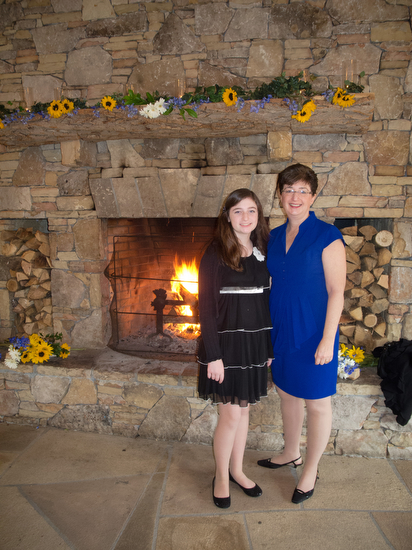You need to hire a photographer that goes beyond what you ask for and gives you surprises. You will most likely need to pay more to the photographer to use a multimedia package, but having a option like this to use on your website is better than just an image alone.
I have discovered that many of the events I cover don’t always have a storyline, but putting some images together with some sound from the event is a great way for people to enjoy seeing the images.
It is the packaging and presentation that is what makes the same images a little more enjoyable.
I put together a gallery of images for parents and created a DVD to send to the school for them to use in their yearbook. They seem to like this and continue to ask if I will photograph the concerts all the time.
This time another parent, Chuck Huels, was recording the concert with the proper sound gear. I asked if he could send me one song to use with a slide show. I also recorded the music with my shotgun microphone on the Nikon P7000, but didn’t get the quality of sound that he attained using multiple microphones.
What really made the difference in the Sights and Sounds package was the quality of the sound recording.
http://www.stanleylearystoryteller.com/Elkins/_files/iframe.html
I want you to pay close attention to some of the images. So here I have pulled some out to explain why I shot them and put them into the show.
 |
| This is my daughter Chelle, playing the viola. This is the #1 reason I was there last night. Be sure and see her playing. (Nikon D3s, ISO 12,800, f/5.6, 1/100 Nikkor 28-300mm) |
While the pictures and the slide show do not tell a storyline, they do tell about moments that are stories in themselves. When you listen to the music listen for how they play in unison. Listen for how they are all playing in pitch. Stringed instruments are much more difficult to play in tune than say a piano where when you hit the note it is what it is. Your finger can be just a millimeter off and the note is off with stringed instruments.
Questions for you
What do you think of the Sights and Sounds format for presenting images? What do you think you would change?
Tips to produce a package like this
- Get the best possible recording you can. The microphone you choose is critical. Surprisingly sometimes depending on the room your smartphone will do just fine. But remember it is sound that drives this more than the images.
- Custom white balance. Be sure and set the camera to the room light and not just to a preset. In this case my custom white balance gave me a Kelvin 3150º with +24 magenta on the tint. As you can see this is not close to those preset.
- Use high ISO setting. I am fortunate to own a Nikon D3S that lets me shoot at ISO 12,800 but the idea is to get sharp and in focus images. ISO 100 will be making you shoot at very slow shutter speeds and even with a tripod the musicians would be blurry do to them moving. Keep the ISO as high as you can to be sure you have good shutter speed.
- Use an appropriate shutter speed. Why didn’t I shoot these photos at 1/500 or faster? I was shooting under fluorescent or sodium vapor lights. Not 100% which it was, but under either of these lights the lights are actually flashing and not a constant light as with incandescent lights. Any shutter speed above 1/100 will be prone to color shifts from frame to frame and/or a stripe through the image of a different color. You know it when you see it.
- Shoot RAW. While you can save a step by shooting in JPEG if you need to do any post processing to lighten, darken or tweak the color the RAW will give you better results.
- Shoot for variety and lots of images. When you put a Sights and Sounds package together, it will most likely be in a 2 minute range. That will require a lot more images than many parents ever typically shoot of their child’s concert. Fill in with closeup shots, overall shots and most of all look for “moments.”
- Software for iPads and iPhones. When you produce something today, be sure it works on all devices. The one I did here will work on many different devices. It also works really well with quality of the image and takes up less bandwidth than a typical video. I want you to enjoy the package and not be waiting on it to download.
I would love to hear your thoughts so please leave your comments below.




















































































